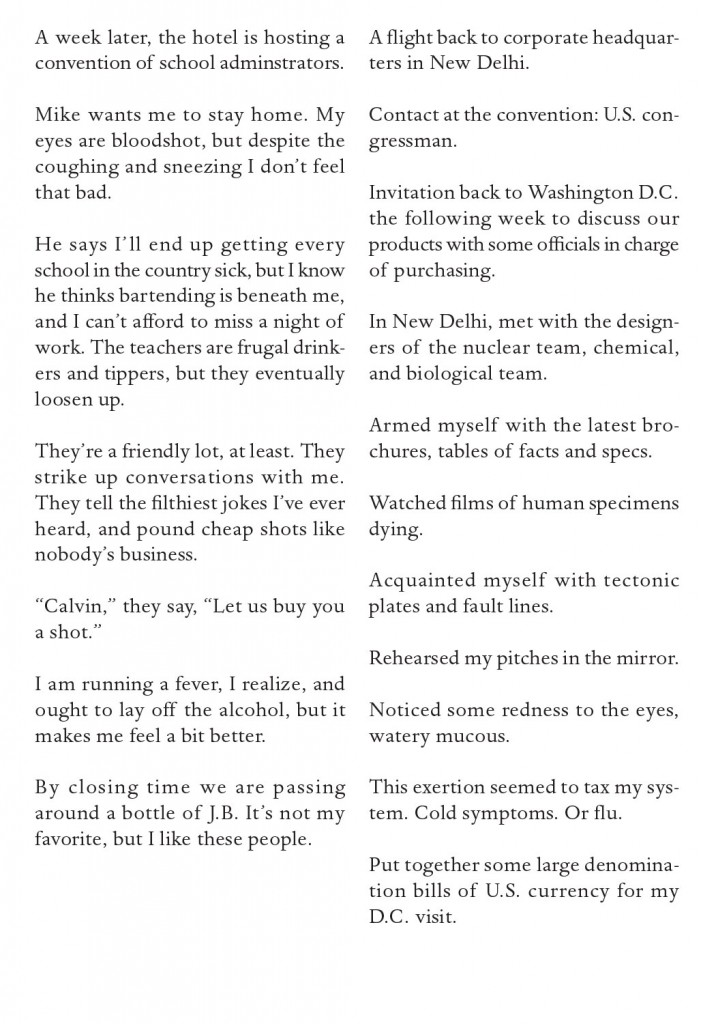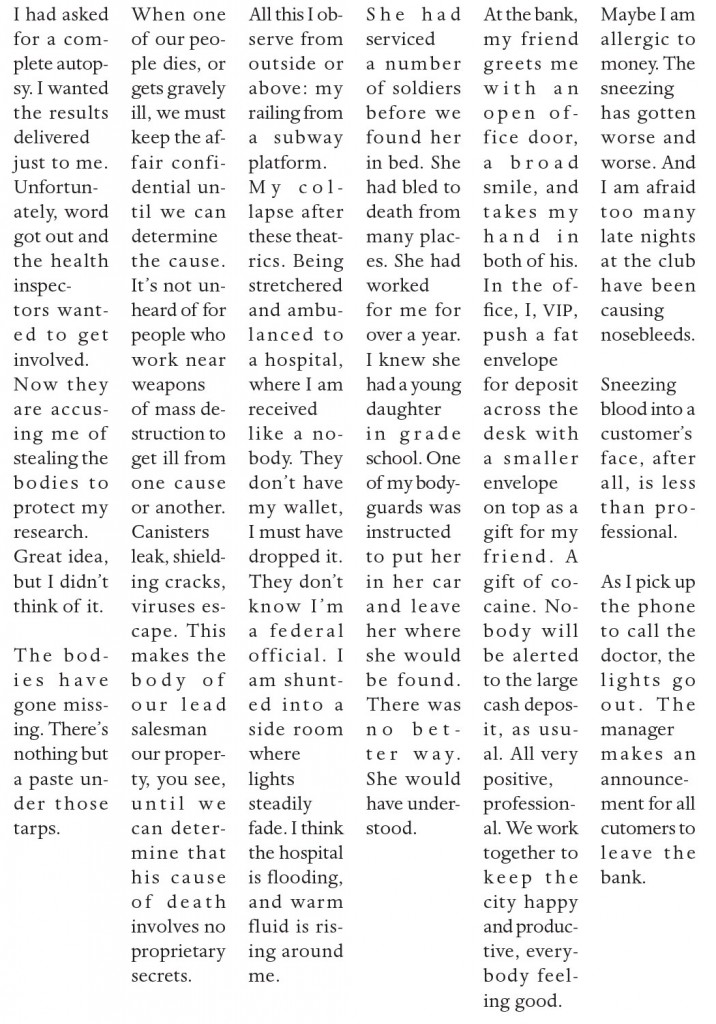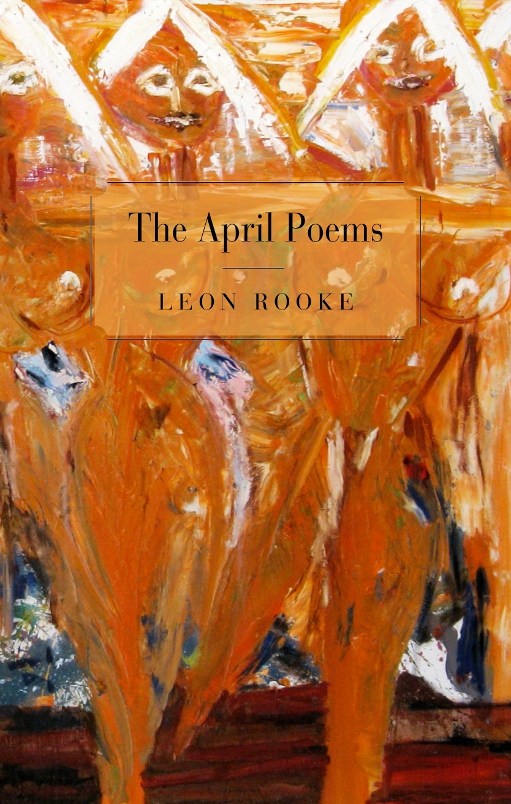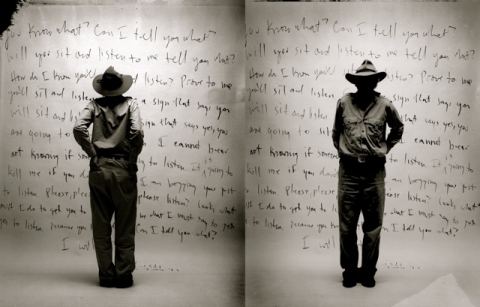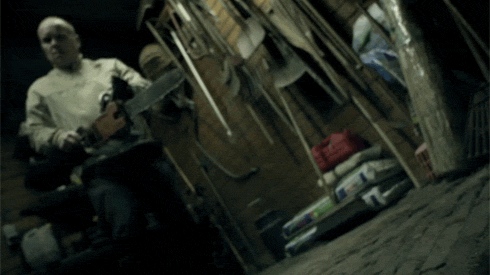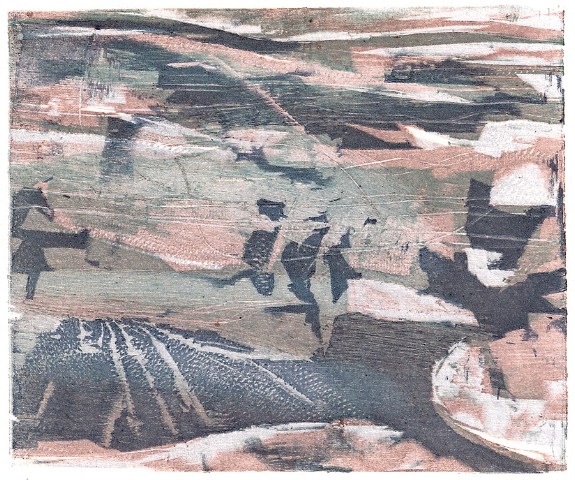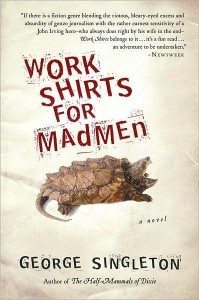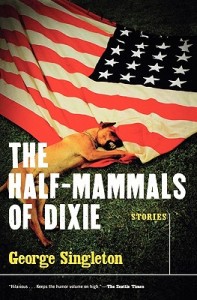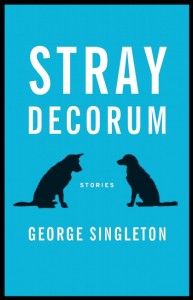In its quality of attention and faith in the salvific power of the right words in the right order, the essay resembles nothing so much as a secular prayer. That, at least, was the original point. The essay has proved wayward, which has been the great secret to its longevity.
“We come too late to say anything which has not been said already,” lamented La Bruyère at the end of the 17th century. The fact that he came too late even to say this (Terence having pipped him to the post back in the 2nd century BC) merely proved his point – a point which Macedonio Fernández took one step backwards when he sketched out a prequel to Genesis. God is just about to create everything. Suddenly a voice in the wilderness pipes up, interrupting the eternal silence of infinite space that so terrified Pascal: “Everything has been written, everything has been said, everything has been done.” Rolling His eyes, the Almighty retorts (doing his best Morrissey impression) that he has heard this one before – many a time. He then presses ahead with the creation of the heavens and the earth and all the creepy-crawlies that creepeth and crawleth upon it. In the beginning was the word – and, word is, before that too.
via In theory: the death of literature | Books | guardian.co.uk.
Gun ownership has declined over the past 40 years — but almost all of the decrease has come from Democrats. By 2010, according to the General Social Survey, the gun ownership rate among adults that identified as Democrats had fallen to 22 percent. It remained at about 50 percent among Republican adults.
Jacob pointed me to this very entertaining lecture, part of a series, by Wes Cecil who teaches at Peninsula College on the Olympic Peninsula in Washington. I listen to this and recall how much I loved the Paralogisms of Pure Reason{{1}} [[1]]See “Mappa Mundi: The Structure of Western Thought“[[1]] section in Kant’s Critique of Pure Reason wherein Kant demonstrated the paradoxical nature of reason (language) which can both prove and disprove the same proposition thus reducing any claim to Correct Thinking or Truth to ashes. This lecture is often very funny while not being entirely sympathetic to its subject. Also a window on American cultural history, history of ideas, Derrida’s reception, etc.
dg
[youtube]http://www.youtube.com/watch?v=mGCiqqT9uo8[/youtube]
.
Surprising statistics from the National Post. These are statistics up to 2007. They clearly show that Americans are tops among gun owners but do not get much bang for their buck. Americans murder people with guns (I know this is a dangling modifier, but this early in the morning I can’t figure a way around it) at a rate of 2.9 per 100,000 of population while in Honduras they kill 68.4 per 100,000. Does this mean that Americans can’t shoot as well as people from Honduras? One can only speculate.
Canada is pathetic with a rate of .51. And we all know about the French — in France they manage to kill only .06 people per 100,000 of population, clearly a wan and degraded race.
Gun ownership around the world: Graphic | Graphics | News | National Post.
A decreasing number of American gun owners own two-thirds of the nation’s guns and as many as one-third of the guns on the planet — even though they account for less than 1% of the world’s population, according to a CNN analysis of gun ownership data.
The data, collected by the Injury Prevention Journal, the United Nations Office on Drugs and Crime, the General Social Survey and population figures from the U.S. Census Bureau, found that the number of U.S. households with guns has declined, but current gun owners are gathering more guns.
via Analysis: Fewer U.S. gun owners own more guns – CNN.com.
Numéro Cinq is delighted to announce that Amanda Jernigan’s poem “Aubade” was selected for the 2012 edition of the annual The Best Canadian Poetry in English. The guest editor for this edition is Carmine Starnino. The continuing advisory editor for the whole series is Molly Peacock.
Amanda’s book Groundwork, from which the poem was excerpted, was named one of the top five poetry books of 2011 by NPR.
Congratulations all around but especially to Amanda. NC readers are advised that this is one of those occasions when it is appropriate to raise a glass of Talisker or two or three.
dg
I don’t know if this is the right thing to do. But NC is a community, somewhat distant at the edges, and yet a lot of us know each other. When you read someone here, you’re, briefly, in his or her heart. The Newtown, CT, shootings came very, very close to us yesterday. Sophfronia Scott and Darryl Gregory, both of whom have published here, have a son who was in the school at the time of the shootings and escaped unharmed. I met their son at lunch in New York last spring, a bright, cheerful boy drawing pictures on the placemats while the adults talked. Think of them tonight and tomorrow and the day after. And think of the poor parents who lost their children. Beyond this, words fail.
dg
There is just something so wonderfully bizarre about this connection—Samuel Beckett used to drive André the Giant to school.
Beckett offered to drive André to school in his truck—a vehicle that could fit André—to repay Rousimoff for helping to build Beckett’s cottage.
—Jason DeYoung
“Keep the Change” is an exclusive excerpt from William Gillespie’s new novel experimental Keyhole Factory, published in November by Soft Skull Press. The novel is about a virus that comes close to destroying the human species. In “Keep the Change” the text replicates, as it were, into columns, more columns on each page as the virus gets worse (as in, the text replicates as the virus replicates). Gillespie is particular sort of experimental writer; he leans towards the Oulipo school of writerly constraint, as in the author adopts some self-limiting device that (de)forms his or her text. Any form is a source of constraint, but in the Oulipo mode constraint becomes the form. Thus Christian Bök’s book Eunoia consists of five chapters and in each chapter he uses words containing only one vowel. E.g. Chapter A uses words that only contain the vowel a. And Georges Perec’s novel A Void is written without the letter e. In preparing this excerpt for publication, Gillespie showed me another piece from the novel that is written like a musical score (we tried to figure out how we could publish it horizontally — as Gillespie said, “The page breaks are a necessary evil.” — instead of vertically but could not crack the formatting dilemma). It’s useful to point out here that much literary experiment is essential playful, fun. And Gillespie’s novel, despite being about disease and the the near total destruction of mankind, has a (ever so deliciously macabre) hopeful side. As the author says in an interview with John Warner at Inside Higher Ed:
There are methods to the madness, but “play” is a fun description of what I did. Regarding glimmers, I see it as a hopeful story, in that the sudden near-total extinction of mankind offers hope for survival of the ecosystem. My book is ambivalent whether it’s about a virus that kills humans, or about humans as a virus killing the earth.
It’s a great pleasure to present his work on Numéro Cinq (and I owe Philip Graham a beer for bringing William Gillespie to my attention; see Philip’s interview with Gillespie at FictionWriters Review: Zombies Are Not Real: An Interview with William Gillespie).
dg
.
.
.
.
—William Gillespie
——————
William Gillespie has published ten books of fiction and poetry under six different names. He is co-author of the world’s longest literary palindrome (so declared by Paul Braffort of the Oulipo) and an award-winning hypertext novel. He works for the School of Molecular and Cellular Biology at the University of Illinois.
The story “Keep the Change” is an exclusive excerpt from Gillespie’s new novel Keyhole Factory, published in November by Soft Skull Press.
The whole point of 3:AM was to foster a community of literary loners; to create a space where we can be alone together. […] There is no party line, although we are rather contrarian, hence our tagline (a nod to Groucho Marx, the Ramones, and Adorno): “Whatever it is, we’re against it.” It sounds rather pedantic, I know, but what I consider to be real literature is always, at some level, a writing against itself. 3:AM is a very broad anti-church. Personally, I think we should publish fiction that has the inevitability of death.
Here’s a brief, sweet essay/memoir/story — an uncategorizable something, if you will — from my friend/former colleague/now Vermont Poet Laureate Sydney Lea who has a knack for being able to extract meaning out of a glancing contact, the briefest of interactions. When he sent this to me, he was himself somewhat uncertain. Perhaps, after all, it was only an anecdote. But I read it and worried on it (like a dog with a bone — Sydney and I tend to talk about dogs when we meet) and then got excited about the way the text keeps surging. Some secret here, I thought, about the nature of good writing, how the text begins with a stranger barging, by mistake, into the wrong room, then quiets, then surges ahead with an even more unsettling invasion. The pattern keeps repeating. Now “the writer,” disturbed, can’t forget the interloper. Details emerge: a melancholy story, alcohol, waiting for a daughter. But again the text quiets; the tired writer returns home to his wife, falls asleep, dreams. And in his dream (the text surges again) he meets his daughter and finds a moment of immeasurable peace. The story works by obsession, image and transformation. The stranger is a mythic other, lost, befuddled Everyman insisting on trying to get into a room that is no longer his. At the end, in his dream, “the writer” metaphorically transforms into the stranger and finds his daughter, that image of love and bliss, and feels at peace. Something very beautiful in this sequence, reminiscent of Chekhov.
dg
—-
As the stranger pushed open his door at the Longhorn Motel, the writer noticed the befuddled grin. “Oh, this is the wrong…,” the man muttered, trailing off and backing out. The writer had long hours to wait before he flew back east from Denver, so, seated at the chipped formica table, he’d been trying to rough out a poem. He’d had small success, and so, as if it would help his efforts, he locked the door against further distraction, even benign as this petty mistake.
A few minutes later, though, the knob began to rattle. The writer slid the bolt. “What’s the matter?” he snapped when he saw the same man standing there. “Can’t you read numbers? One-Oh-Six. That’s me, not you.” The other man didn’t appear to hear. He leaned against the door with one shoulder, holding an ill-sorted bunch of clothes in both hands. “Get the hell out of here!” barked the writer, as now the other started leaning against him. The interloper was younger than the writer, and he wasn’t small, but smaller than the man who belonged in the room, who put both forearms under the other fellow’s chin and shoved him hard enough that he fell outside onto the lot’s asphalt, a plaid pajama top flying one way, a gravy-stained shirt the other, and a sock landing over both eyes like a flimsy beige blindfold. Even masked, his face wore that silly smile. It might have been a comical sight in other circumstances. The writer relocked his door.
His poem continued to go nowhere at all, so in spite of the time gaping before him, he decided to repack his own clothes. He couldn’t make that little chore last very long, however, and soon he stepped out to grab a styro cup of bitter-end coffee from the office vending machine. Once more he spotted the other man. He was up on his feet now, at the very spot where he’d been knocked down, his odd bundle of garments regathered, the smile still showing, though not directed at anyone or anything in particular, least of all at the one who’d shoved him.
The one who’d shoved him asked the desk clerk. “What the hell’s the story on that guy?”
“Seems like he’s lost,” the clerk answered. “I give him the key to room 124, but he keeps tellin’ me he needs to get into 106.”
“My room,” the writer mused, stressing the obvious.
“I figure he’s drunk as a skunk,” the clerk snarled, tossing his head and turning back to his affairs.
The writer left room 106 and went out for breakfast. He dawdled over his meal for more than an hour at a place called the Country Fare. When he returned to the Longhorn, he found the showroom-clean, white Ford 150 still parked in front of 106, but its owner was nowhere to be seen. He walked back to the motel office. “What became of our friend?” he asked. The clerk said he’d found him in some other room, not 106 and not 124, the room he’d rented.
Apparently, all he could say was, “I’m waiting for my daughter.”
In the end, not knowing what else to do, the clerk called the police. The cops summoned the rescue squad. The author of poems doesn’t know what happened after that because he abruptly left for his flight, much earlier than he needed to. On the way toward the airport in the rental car, seated by the gate, airborne in the plane, and all through the long drive northward to Vermont after touchdown, he couldn’t help feeling rotten about how he’d heaved that poor trespasser onto his backside. He understood how guilt might bother him, and it did; but he couldn’t quite name the other things beyond guilt that he suffered. He tried to console himself, of course. How, after all, could he have known what ailed the other man? How could he know even now?
Yet even these weeks later, he senses the same mix of guilt and whatever else may be. If anything, his troubling state of spirit has strengthened, broadened, as if it will last him lifelong. Maybe at least he can write about it. Maybe he has always written about it in some vague way. Whatever it is.
He remembers arriving home that night dog-tired in body and heart, and, right after supper with his wife, going up to bed; but there’s a more powerful memory, a dream he had some time toward dawn, in which that wife stood with him and the second of their three daughters next to a splendid bonfire. Someone had lit it at the end of their woodlot road. A quiet bliss pervaded the vision, or rather a feeling like the peace that the apostle Paul describes: the one which passeth all understanding. For a moment, still mostly asleep, he arrived at a warming conclusion: that such peace might actually remain in the world even after he left it, and that somehow it might be available to any person in sufficient need of it. Awake, he felt desolate to dismiss the notion as fantasy.
There had been times when the writer needed it for himself, and there would be other times to come. He knew that.
He didn’t think of the smiling man at the Longhorn just then, though later he saw that he might have.
—Sydney Lea
————————————————
——————–
SYDNEY LEA is Poet Laureate of Vermont. His selection of literary essays, A Hundred Himalayas, was just published by the University of Michigan Press in September. In January, Skyhorse Publications will issue A North Country Life: Tales of Woodsmen, Waters and Wildlife, and in April 2013, his eleventh poetry collection, I Was Thinking of Beauty, is due from Four Way Books. His most recent collection of poems is Six Sundays Toward a Seventh: Selected Spiritual Poems, from publishers Wipf and Stock. His 2011 collection is Young of the Year (Four Way Books).
He founded New England Review in 1977 and edited it till 1989. Of his nine previous poetry collections, Pursuit of a Wound (University of Illinois Press, 2000) was one of three finalists for the Pulitzer Prize for poetry. The preceding volume, To the Bone: New and Selected Poems, was co-winner of the 1998 Poets’ Prize. In 1989, Lea also published the novel A Place in Mind with Scribner, and the book is still available in paper from Story Line Press. His 1994 collection of naturalist essays, Hunting the Whole Way Home, was re-issued in paper by the Lyons Press in 2003. Lea has received fellowships from the Rockefeller, Fulbright and Guggenheim Foundations, and has taught at Dartmouth, Yale, Wesleyan, Vermont and Middlebury Colleges, as well as at Franklin College in Switzerland and the National Hungarian University in Budapest. His stories, poems, essays and criticism have appeared in The New Yorker, The Atlantic, The New Republic, The New York Times, Sports Illustrated and many other periodicals, as well as in more than forty anthologies. He lives in Newbury, Vermont, where he is active in statewide literacy and conservation efforts.
These are a scatter of The April Poems, not many, and Leon Rooke has a whole book of them coming out in, well, April, with The Porcupine’s Quill. April is the eponymous heroine of this book, these poems, the words of which Leon channels with oracular aplomb.
April always wrote in a good clear hand:
Grass is first to hold the snow.
Blue lilac on my window did grow.
The girls drove me crazy today,
So did so and so.
April has three daughters who drove her crazy and still do, her past is dubious and fraught, but former admirers dog her with passion.
next time you’re in trouble
breathe deeply and I’ll be on your bumper
like a hurricane.
Rooke writes with a mix of the vernacular, the colloquial, and the intimate informal, salted with speech rhythms from his North Carolina roots and an aphoristic flair that makes every line a surprise and a delight right up to the point, the quintessential Rooke moment, when the words become other than what they seem and he reaches for some extraordinary truthful mystery.
Dear Tate: It is a lie that beautiful words have disappeared. I have myself a trunkful
in the attic, and thousands more buried underground. April has a stash in small jars
in the pantry, falsely labeled Spices. The girls hide theirs in nine teacups in the three
doll houses, No Admittance To Anyone, Many fine words, luminous phrases, died
on the battlefield. Pirates stole many. Coiled serpents, oiled evangelists. The Pentagon
has ten thousand, no food, no water, locked up in distant prisons. In some cities
ebullient words thrive – Moose Jaw, Sioux City – living on chocolate eclairs, butternut
bread, turnips. They are home before dark. They dislike fanfare.
The cover image is from one of Rooke’s own paintings, a sampling of which you can find on the NC Art page.
dg
§
39. April and the Bad Bees
A woman in the laundromat said to April, The bees are truly nasty this year.
April was quite at a loss in what manner to reply, then noticing the speaker
was addressing another woman to her rear, though only because this other woman
replied to the first, Yes, I have never seen them so bad as this year. I do not believe
these are our standard-type bees. No, these are mating bees, said the first, both
women then settling heavy glances on April and her triplet daughters occupying
a three-seater pram. April inserted another quarter in the drier. The women sat in
green plastic chairs, talking away about the nasty copulating practice of these
repugnant bees, being quite explicit, even vulgar, even pornographic, was April’s
thought, not liking either the glances coming her way, as though she personally
was to blame. They swarm a person, this one woman said, they hold her down
until all have had a go at her, and then they swarm away and do the same
to someone else and no one says a word. Yes, the other said, it is even worse
at my house. They tie us to the beds, they sup on our toes, they regard us as slaves,
even the mites have noticed. Whereupon the women fell silent for some few moments,
content to watch clothes swirling in the driers. April’s triplets whimpered.
Then the one woman said, What I think is that this queen bee business
is a lot of rubbish. No queen in her right mind would permit such appalling
behavior. You think it is a king, then? asked the second. Why, of course,
came the rejoinder, some nasty despot king, have you not known them by the
thousands? The two women at this point rutting a final malevolent glance
upon April, then lifting their wings and flying off into abysmal night.
40. April’s Clunker Car
conked out on a high rise
not that far from Indian Country,
where she knew people. A tow-truck guy,
there in an instant, said he’d noticed her condition
round about the Tonawanda River
up by Singalong, the best part of three days ago.
April in the cab beside him, he confessed
he’d been on her tail pretty much the whole of her life.
I ought to have married you and not that other party,
he said, not to claim I could have done any better
at the time and not that there’d been any chance
of getting out of the thing
without losing my kids.
They are doing okay, he said,
about the same as yours.
Nice to see you holding up so well.
Yup, well, here you go, he said,
pulling into a hustling hub,
next time you’re in trouble
breathe deeply and I’ll be on your bumper
like a hurricane.
41. On the Ropes
Love needs new shoes
but is out of work.
Last night love was arrested,
Drunk, Your Honour,
leaning against a lamppost.
Did she resist your advances?
Yes, she did, now you mention it,
plus she spat on my boots,
vile language, too.
Take her to an alley, the judge said,
beat her to a pulp.
Love staggered away blind
hot wires barbed in her breast
some bones broken
and now naked of foot
in fact naked head to toe
bleeding rather a lot.
Not that anyone much looked:
pretty autumnal day
old bruised ugly broad
bent like that.
42. April’s Deep Remorse
has as cause three grown-up daughters
who last night received a lifetime ban
from the Epicure on Queen Street.
They claim innocence: we were meek ravens
with barely a chirp. It was that theatre bunch
settling old scores, flit and flame
and hands up the dress. Troubled Gertrude,
hemlock ear, Cassandra’s bitter tongue:
your mistresses do nothing but eat ice cream
all day! You would not cross the room
to spit if my very heart was on fire!
Your Master splits His own tongue!
His flaws are greater than the sum of yours!
Seven police cars racked the chains on twelve.
Lady, didn’t I just arrest you? The Epicure
is the latest haunt hobbling April’s troupe.
Not even the Brunswick House
will have them. We can’t go anywhere.
Devout Muslim, Devine Bastards,
kicked us out. Ratsuck Tim Horton’s too
43. April Affirms She Married Well
I was his pearl of a girl
his twenty-piece orchestra
with perfect legs
his long hedge with naughty blooms
lithesome gypsy curse
spritely gin fizz
his bright sun
bursting
…….every pane
44. Thou Beside Me Singing
April’s friend, Tate, wanted to know
where went the lofty rhymes, the shimmering radiance
in a poem’s long ago. He liked those words cadenced light as a bird,
say one of those that can hold still against raging wind, stop and start
words from an eloquent brain, a humming bird, April thought he meant.
Fancy syllables espaliered onto a page
like a peach tree clutching a drain? Yeah, something like that,
Tate said, but making sense, you know, ordinary sense, like
I don’t have to get out my Ph.D. Pretty words, like you’re the critic,
where did they go?
………………………………………+
……April always wrote in a good clear hand:
……Grass is first to hold the snow.
……Blue lilac on my window did grow.
……The girls drove me crazy today,
……So did so and so.
………………………………………+
April said to Tate, I keep my best words in a drawstring bag around my neck.
………………………………………+
Those were the days.
She didn’t say when.
………………………………………+
She was ever at us, this intelligent woman poking the hornets’ nest.
………………………………………+
Don’t wake the triplets. They’ll never get back to sleep.
Those girls sleep too much.
If you had to chase them you wouldn’t think so.
I wore myself out chasing you.
Liar, liar, what’s on fire.
………………………………………+
Tate is waiting. Tate, the dolt.
Dear Tate: It is a lie that beautiful words have disappeared. I have myself a trunkful
in the attic, and thousands more buried underground. April has a stash in small jars
in the pantry, falsely labeled Spices. The girls hide theirs in nine teacups in the three
doll houses, No Admittance To Anyone, Many fine words, luminous phrases, died
on the battlefield. Pirates stole many. Coiled serpents, oiled evangelists. The Pentagon
has ten thousand, no food, no water, locked up in distant prisons. In some cities
ebullient words thrive – Moose Jaw, Sioux City – living on chocolate eclairs, butternut
bread, turnips. They are home before dark. They dislike fanfare.
—Leon Rooke
———————-
Leon Rooke has published more than 30 books, including novels, short story collections, plays, anthologies, and “oddities,” and more than three hundred short stories. Rooke’s many awards include the Governor General’s Award for Fiction (for Shakespeare’s Dog, 1985), the Periodical Association of Canada Award for the English-Language Paperback Novel of the Year (for Fat Woman, 1982), a Pushcart Prize (1988), the North Carolina Award for Literature (1990), and the Canada/Australia Literary Prize in 1981, for his body of work. Also the W. O. Mitchell Literary Award, for his writing and his mentoring, and the ReLit Short Fiction Award. Rooke has taught at more than a dozen Canadian and U.S. universities. He lives in Toronto.
I interviewed Gordon Lish years ago, 1994, I think, when I had a weekly radio show. We knew each other as author and editor. He had published a story of mine in The Quarterly and also had been my editor for The Life and Times of Captain N (Knopf, 1993). Shortly after my novel appeared, Lish was let go at Knopf (I do not think there was a cause-and-effect relationship, but you never know). This interview took place in the aftermath of both events.
The interview touches on Lish’s relationship with Knopf and, earlier, Esquire, where he was dubbed Captain Fiction; also his lightning rod personality, his friendship with Don DeLillo, his own writing, the virtues of throwing away and cutting, and the difference between mystery and information in art. It is always a treat to hear Gordon speaking extemporaneously; his deep-voiced, rhythmic orotundity and his talent for finding the precise if unexpected phrase are inspiring as oratory. Best of all, he speaks of life, fate and art in ways that inscribe those subjects with a desperate significance, even heroism.
I found the old tape of this interview, along with others, in a box in storage. There is some extraneous noise for which I apologize.
—Douglas Glover
Interview with Gordon Lish Part I
[podloveaudio src=”http://numerocinqmagazine.com/wp-content/uploads/2012/12/Lish-1.mp3″]
Interview with Gordon Lish Part II
[podloveaudio src=”http://numerocinqmagazine.com/wp-content/uploads/2012/12/Lish-2.mp3″]

“A Cut” is a very short story, allegorical, if you will, mordant and slyly ironic in the modern mode, representing a clash of values, a clash of the new and the old, with the voice of tradition coming in the words of the teacher trying to keep control of his classroom, inhumanely and blindly reciting the former courtesies in the face of contemporary social realities (chaos and violence). “A Cut” is Catalan writer Quim Monzo‘s second appearance in Numéro Cinq (see his earlier story “Gregor” here). The story is excerpted from Monzo’s collection A Thousand Morons, translated by Peter Bush, and just published by Open Letter Books. See NC Senior Editor Richard Farrell’s review of A Thousand Morons here.
dg
——
Toni dashes into the classroom with a look of terror in his eyes and a gash in his neck. It is a deep, broad cut, spurting blood that is bright crimson rather than red. One would say, on the evidence of a glance, without a proper investigation, that, now that the flesh has opened up, the gash—that in principle should be no more than a millimeter wide—is two to three centimeters across. We might estimate its length at twenty to twenty-five centimeters, given that it starts under his left ear, goes down his neck, and ends level with his chest, slightly to the right of his sternum.
“They attacked me with a broken bottle.”
Blood is seeping down his neck, staining the white shirt of his uniform. His jacket collar is equally soaked in blood.
“Come on, boy. Is this any way to walk into the classroom, Toni?”
“Sir, Ferran and Roger got hold of a broken bottle next to the vending machine, stuck it into me, and . . .”
“How does one enter the classroom, Toni? Is this how one comes into a class? Does one enter any old way? Does one enter without saying ‘Good morning’? Is this what we have taught you at school?”
“Good morning,” says Toni, putting his right hand over the gash to try to staunch the flow of blood.
“Generally speaking, habits have been degenerating, and you are not to blame, I know. We are also to blame, in institutions that are unable to offer an education that shapes character with a proper sense of discipline and duty. But society is also to blame, and all the many parents who demand that school provides the authority they are incapable of wielding. You, Toni, are but a sample, a grain of sand from the interminable beach of universal disorder. Where is the discipline of yesteryear? Where are the sacrifice and effort? Where are the basics of education and civility we have inculcated into you day after day, from the moment you entered this institution? I know that many other educational institutions practice a much laxer form of education, and that, as it is impossible to totally isolate each individual, and being aware of the tendency of the youth to mingle and fraternize, I know, for all these reasons, that, however much our institution strives to educate you in exemplary fashion, if we are the only ones inculcating any norms, you have too great an opportunity to be polluted by the lax mores of others.”
“Sir, I’m soaked in blood.”
“So I see. And I can also see the dreadful mess you are leaving on the parquet. Not to mention your shirt and your jacket. You know by now that I like your uniforms to always be spotless. But we will leave that for tomorrow. Now go to reception and ask Mr. Manolo for a mop and a bucket of water and try not to splatter blood all down the corridor, as you will have to clean that too.”
—Quim Monzo
––––––––––––––––
Quim Monzo is an award-winning Barcelona based writer. He has written novels, story collections, essays and journalism. His short story collection, A Thousand Morons, translated from Catalan by Peter Bush, is available from Open Letter. Bush’s sharp and flawless translation brings together 19 stories and shorter fictions from one of Catalonia’s leading writers. Monzo’s short story “Gregor” can be read here at Numéro Cinq.
The Mayan and Hopi Mesoamerican Long Count calendar may have begun in 3114BC and continued unerringly ever since, but it comes to an abrupt halt on 21 December 2012. Hence, the belief gaining ground among those who fall for this kind of thing that the cosmos will cease to exist in 12 days’ time.
via Doomsayers await the end of the world – in 12 days’ time – World Politics – World – The Independent.
Dear Numéro Cinq at the Movies watchers,
My Irish Italian upbringing means I have been raised to understand Christmas as a dark, chaotic, cacophony of strife and love: my grandmother’s idea of Christmas nostalgia was to one year read a letter she had written on Christmas thirty years before, incidentally the year the neighbour had shot himself in his basement. Dark. So my choices for Numéro Cinq at the Movies Christmas editions have been dark.
But it would be insensitive not to recognize that this Christmas / holiday season seems to be in danger of being preempted by sadness, pain, and tragedy. This December is already too dark for many. So I am offering two installments of Numéro Cinq at the Movies: a dark or a light, and you can choose just as you choose your turkey meat.
What follows here is the light. But I encourage you to see the dark as well.
Happy Holidays from the Numéro Cinq at the Movies folks.
–R. W. Gray
In Ekaterina Vorobyeva’s “Entire World is Mine” a small boy wanders through a snow-filled, winter day, filling time before his mother gets home. There are no subtitles but they are unnecessary, the story’s matter is perfectly visual and relatable.
There’s melancholy to this boy’s solitary day, certainly. But there’s also pleasure generated by a string of sensations and subtle cues: his bare fingers on ice, then run under water to warm them, hot needles piercing the coldness away. The taste of juice. The lamp pushing away the growing dark. It’s a child’s world, both simple and large, everything important in the universe caught in a series of small sensory moments.
This style of focusing on small moments of sensation is a great way of representing the simple concentration and focus of children in visual storytelling. In Alicia Duffy’s “The Most Beautiful Man in the World,” it is the sounds of the TV, the dog breathing, the crickets in the grass.
And in Jean-Pierre Jeunet’s Amelie, the protagonist who is essentially an adult child full of wonder, it is her simple sensory pleasures that are represented the same way: she likes dipping her hand in bins of grains, cracking creme brûlée with a spoon, and, skipping rocks at St Martin’s canal.
There’s something Proustian in this largeness contained in small things, something akin to petites madeleines or mother kisses at bedtime. It’s about remembrance and bodily memory. In “Entire World is Mine,” when the boy puts his hand under the water he could just be washing. Only my own memory of wet frozen fingers under hot water makes me remember and imagine the boy’s fingers must feel needled as they warm up suddenly.
Film stories about children told this way offer the opportunity for us to be more present, more aware of the sensations of the moment. We can guess that this boy is waiting for his mother to come home and this is confirmed by how he calls out to her when she comes through the door. But this isn’t a story about a reunion or absence even. The boy’s ability to fill his moments with living encourage us to do the same. And in the chaos of this coldest, darkest month of the year maybe this is the perfect reminder.
–R.W. Gray
Dear Numéro Cinq at the Movies watchers,
My Irish Italian upbringing means I have been raised to understand Christmas as a dark, chaotic, cacophony of strife and love: my grandmother’s idea of Christmas nostalgia was to one year read a letter she had written on Christmas thirty years before, incidentally the year the neighbour had shot himself in his basement. Dark. So my choices for Numéro Cinq at the Movies Christmas editions have been dark.
But it would be insensitive not to recognize that this Christmas / holiday season seems to be in danger of being preempted by sadness, pain, and tragedy. This December is already too dark for many. So I am offering two installments of Numéro Cinq at the Movies: a dark or a light, and you can choose just as you choose your turkey meat.
What follows here is the dark. But I encourage you to see the light as well.
Happy Holidays from the Numéro Cinq at the Movies folks.
–R. W. Gray
[youtube width=”500″ height=”404″]http://www.youtube.com/watch?v=gGHvXSIfcGs[/youtube]
In Andreas Pasvantis’s “December,” we are taken on a terrifying journey of kidnapping and trauma, with a festive finale. All the aesthetics are decidedly horror-ific: the low camera angles, the washed out lighting, the dirty focus, the constant Dutch tilt shots (so the POV seems horizontal or lying down) all build our anxiety. The point of view shots limit what we can see and alter focus so we are inescapably in the action but do not know who we are.
The action is sudden and unexpected: we are attacked with an axe, dragged, covered up, sold into what will certainly be more horror, complete with a chainsaw attack. And what builds our feeling of helplessness is not just that the action comes at us, it’s that we are seen by the people in the film. We are attacked and looked at directly, and this coupling of violence and seeing establishes that we are in a world without compassion.
All along this chain of violence lies the question “how badly will this end?” We are decidedly in the horror genre so we are aware from the start that the ending will be bloody. The last shot is absurdly festive, though, full of beaming faces smiling at us. This scene is perhaps even more violent than the ones before it because all the violences that preceded it build to this insensitive holiday moment. A series of acts of violence and pain that culminate in a festival of insensitivity and smiles.
Holiday movies routinely play off this central tension; the anxiety of the holidays serves both comedy (National Lampoon’s Christmas Vacation) and horror (Black Christmas). I think, though, there’s a more thematic interest here, too. The holiday occurs not long after the darkest day of the year, the lights and gay apparel used to cloak what otherwise might be the most lifeless days of the calendar year. That which is repressed will rise up. This, I suppose, is why we also eat our way through the holidays, to cover up the eventual return of the repressed and stave off the cold and dark waiting outside.
In “December,” we are guided to see the glee and yuletide smiles with a sort of irony; we have seen all the horrors that this holiday scene represses. And because of the use of point of view shots it is our trauma that is covered up with decorations and awful sweaters. But there’s something reassuring about this irony, like finding surprise rum in your eggnog. And this recognition of darkness underlying the holiday lets a little of it out and makes room for the light.
–R. W. Gray


Are there no longer any ants in Barcelona? Have they exterminated them all? Have they gone into hiding? Have they migrated to the suburbs?
—Quim Monzo
A Thousand Morons
Quim Monzo
Translated by Peter Bush
111 Pages; $10.35
Open Letter
ISBN-13: 978-1-934824-41-2
The French philosopher Jean Baudrillard wrote that when we lose the relationship between the real and the map, between the referential thing and the simulation of it, we enter a strange, confusing space, something he called a second order simulacrum.“Today abstraction is no longer that of the map, the double, the mirror, or the concept. Simulation is no longer that of a territory, a referential being, or a substance. It is the generation by models of a real without origin or reality; a hyperreal.”
Innovation and technology have brought abundant wealth and convenience into the world, but at what cost? We gorge on steady diets of advertising, steroid-fed athletes, and derivatives of something un-ironically called reality TV. (Even the joke is lost now, reality TV no longer being oxymoronic, perhaps only moronic). Our food is more abundant and readily available than ever, but it is also pre-processed and genetically modified. We connect instantly with friends and family across vast distances, but our online presence has robbed of us of privacy and silence.
Entire libraries of books can be carried around in our hip pockets, yet who has time to read? The ever-accelerating human narrative seems to be squeezing out nuance and complexity in favor of 140 character messages with hashtags and 3 million followers, but no actual person ever at the end of it all. Could Donald Barthelme have been right when he wrote that fragments were the only trustworthy form?
Surely we still need important voices crying out from the margins. The very best of our poets and writers always hover just inside Plato’s allegorical cave, somehow still able to witness and report that the culture of the hyperreal is an increasingly spurious one, not built from shadows of real beings dancing in front of the fire, but, more and more, from shadows of the shadows themselves.
The Catalan author Quim (pronounced “keem”) Monzo might well qualify as one of those voices. His fiction has been called surreal, hyperrealist, and highly original. He has written stories, novels, essays and translations throughout his long career, and he has worked as a journalist for various Barcelona newspapers. His brand-new-in-English story collection, A Thousand Morons, just published by Open Letter Books, wonderfully translated by Peter Bush, is filled with a dazzling lineup of stories, many of them awhirl in the transitional spaces between tradition and modernity.
Its characters and the places they inhabit are often nameless, shapeless, entities; many are merely pronouns, wandering through half-familiar territories. It might be one mark of the hyperreal world that proper names have become redundant: “The boy is walking down the street with a rucksack full of fliers hanging over his shoulder on a single strap and a roll of sticky tape in one hand.” Thus begins Monzo’s short story “The Boy and the Woman.” Does it matter what we call the boy? Have we all been likewise reduced in our over-crowded world? Even the slightly misanthropic title of Monzo’s book serves as a gentle (if playful) accusation, though it could’ve been more damning: Monzo could’ve titled it 7 Billion Morons and been done.
Written at the intersection of old and new, A Thousand Morons pulses with the current of time running through its sentences. In old age homes, mothers and fathers rot away and wish only for death. In refigured fairy tales, the prince rapes the sleeping maiden. There’s a certain madness about it all, with perverse gestures of love, misguided fools and ophthalmologists who can’t see. At every turn, absurdity and contradictions abound, as do humor, wit, and an enchanting spectacle of language. The sand shifts beneath your feet, and leaves you unsteady, shaken, wondering what it all means. The world is changing, Monzo seems to be saying, stand back and watch it with me.
In “Things Aren’t What They Used to Be,” Marta remembers her childhood, when, “though they had a television, her father, mother and nine siblings sat around the table at suppertime and nobody dreamed of asking for the television to be switched on.” Later, when she’s a mother herself, Marta regrets the way television has come to saturate her family life. Dinners pass in silence, her son and husband watching the news or Formula One races at the table. But before long, “Marta had begun to wax nostalgic even for those times, when she, her husband and their kid spent the night in front of the television.” The husband and father now lock themselves away with their computers, leaving Marta to miss the good old days when they at least occupied the same space, even one backlit by the television’s flickering blue lights. In two just two pages, Monzo creates an atmospheric tension about the rapidly changing world, making it humorous and heartbreaking at the same time.
But Quim Monzo is no Luddite; he’s not so much lamenting the passing of tradition as he is dissecting it and leaving its corpse on the table for us to examine. In some cases, he seems to willfully bid a fond farewell to the old ways. In “The Cut,” a boy enters a classroom with a gaping, bleeding wound in his neck. While he pleads with his teacher for help, the teacher upbraids the injured boy:
“Generally speaking, habits have been degenerating, and you are not to blame, I know. We are also to blame, in institutions that are unable to offer an education that shapes character with a proper sense of discipline and duty. But society is also to blame, and all the many parents who demand that school provides the authority they are incapable of wielding. You, Toni, are but a sample, a grain of sand from the interminable beach of universal disorder. Where is the discipline of yesteryear? Where are the sacrifice and effort? Where are the basics of education and civility we have inculcated into you day after day, from the moment you entered this institution?”
All these words while the blood pools around the boy’s feet. Absurdity abounds, past, present and future.
Monzo’s ability to reconfigure and challenge allows him to pack a literary punch with brutal efficiency. In the 150-word story “Next Month’s Blood,” the angel Gabriel visits the Virgin Mary and proclaims God’s intention to impregnate the young woman. But Mary refuses the holy annunciation: “’What do you mean no?’ asked the archangel at a loss. Mary didn’t backtrack: ‘No way. I don’t agree. I won’t have this son.’” Putting aside the humorous, contemporary dialogue between the two, the story reflects not only the changing role of women in the world, but the rejection of the hegemony of the Church, as well as some sort of weird empowerment and demystification of the Madonna, one of the most iconic figures in all of Spain.
A Thousand Morons is divided into two sections. The first section contains seven traditional length stories, and the second is made up of twelve shorter stories, what might be called ‘flash fiction’ pieces, some less than a page in length. Throughout both sections, Monzo interrogates the changing landscape of storytelling itself.
In “Thirty Lines,” an unnamed narrator explores how to tell a story using only thirty lines of prose. “It’s like asking a marathon runner to run a hundred meters with dignity,” the narrator says, even as he writes. But by the end, he accomplishes this ungainly task of compression, and the narrator (and presumably Monzo behind him) defeats the assignment by turning the task against itself:
He has only seven to go to reach thirty. But, after he has registered that insight—plus this one—even less remain: six. Good God! He is incapable of having a thought and not typing it, so each new one eats up a new line and that means by line twenty-six he realizes he is only four lines from the end and hasn’t succeeded in focusing the story, perhaps because—and he has suspected this for a long time—he has nothing to say, and although he manages to hide this fact by dint of writing pages and yet more pages, this damned short story makes it quite clear, and explains why he sighs when he reaches line twenty-nine and, with a not entirely justified feeling of failure, puts the final stop on the thirtieth.
Monzo’s spare prose leaves little room for context. Explanations and motivations remain elusive. Yet there are echoes of wisdom, and the absurd becomes more than just whimsical commentary on the world. In the opening story, “Mr. Beneset,” Mr. Beneset’s son arrives at an old age home to visit his ailing father. He walks into the room only to discover his father putting on “black and cream lingerie, the sort the French call culottes and the English French knickers.” What’s most startling about this set up is that Monzo provides no details, no clues to the reasons for what’s happening. We don’t know if the father has simply lost his mind or if he’s been cross-dressing his whole life. The son makes no comment about the odd behavior. Mr. Beneset puts on tights, a skirt, applies his makeup and then heads out to the backyard where the other residents of the old age house “gawp vacantly” at the two men.
But perhaps the quiet wisdom of the story rests on the way love is offered without stipulation, even while the other residents gape at the strange old man. At the end of the visit, as Mr. Beneset and his son say their goodbyes, “they kiss each other, the son turns around, walks away, stops by the door, turns around, waves goodbye to his father, closes the door and uses the handkerchief to remove the lipstick the kiss left on his cheek.” Is this not a nearly perfect example of love?
By toying with expectations, by working against logic, Monzo creates sharp instabilities in his stories. We are enchanted, confused, even a bit angry at ourselves for not understanding. At times, we can’t help but wonder if we have suddenly become one of the thousand morons.
If there is a shortcoming to this book, it’s that Monzo’s characters often feel overly disembodied. There’s a frigidness about them, a parchment paper quality that makes them dry and brittle. It’s hard to feel compassion or empathy, but then again, that might be exactly the point. Monzo’s characters reflect the contemporary zeitgeist, an age when men and women will drive by and honk if your car breaks down on the side of the road. But their derision is not borne out of cruelty so much as it is out of conviction of certainty about their world. They wish you no harm as you stand there on the side of the road waiting for help; they simply expect you’ll have a cell phone and already have called for a tow truck.
Almost fifty years ago, John Barth wrote about the literature of exhaustion. Today, we flirt not just with exhausted literature, but with the literature of the comatose, the persistent vegetative state that is becoming our civilization, dominated by media moguls peddling pop culture, best sellers and Pepsi Cola across vast, global landscapes with little regard for anything besides profitability. A Thousand Morons was originally published in 1997, just as the twenty-first century was about to dawn, as the new millenium’s Everyman was about to rise from his bed, stretch his arms and head off for work. Except he wasn’t a man anymore, he was an IP address, and he wasn’t heading for the office, but for the local Starbucks, and whether he was in Mumbai or Manhattan, Cairo or Kuala Lumpur, the menu remained the same (and in English). He ordered his venti frappuccino — words themselves now part of the hyperreal lexicon — sat down at his wireless hot spot and connected to the world. Except he couldn’t connect to anyone real, only to a host of other disembodied, genderless abstractions, avatars lost in cyberspace, that ever- accelerating multiverse of 4G networks, pre-packaged apps and unlimited texting.
Monzo indicts us all, participants in our own demise, as we drift further and further away from the things which anchor us to the ground. We are being crowded out, Monzo says, most poignantly in “Shiatsu” the final story in the collection “It’s a great bar,” the story opens, “a favorite in the neighborhood, with maybe the finest ham in Barcelona, and hocks—done in the oven with onion, tomato, pepper, white wine, and cognac—of the highest quality.” Three men are enjoying breakfast at the bar, until they forced to leave by a crowd of newcomers. These loud, jovial people appear to be outsiders. Under their arms, they carry (ironically) folders from the “Institute for traditional Chinese medicine.” One by one, the original three men in the café give up their seats and are squeezed out by these newcomers, until only one of the original three remains. The newcomers (for some reason, I picture them as hipsters, in skinny jeans and carrying the latest version of the latest smartphone) are eyeing this last man’s table, hoping he’ll leave too. He endures for a while, but they are bumping past him at the bar:
But soon the accidental knocks become deliberate and increasingly outrageous, and so they pile on the pressure—now he hears them pushing to shouts of ‘Come on, altogether,: wow, wow, wow!’—he gets up and pays. As he is going into the street to the gleeful victory cries of the throng inside, he has to move aside yet again because three more individuals sweep in with their folders from the institute for traditional Chinese medicine, masters now of the whole of that bar they have finally succeeded in making their very own.
How odd that the men in the bar yield to the crowd so passively. How quickly they are replaced and vanquished, though perhaps this has always been the way. Out with the old, so the saying goes.
In Barcelona, where ham cures on the hook above the bar, ordering a plate of jamon y queso means that the diner sits just inches from the kneecap of the sacrificed animal. Try putting a meat grinder in the deli aisle of your local Trader Joe’s and see how quickly the store empties out. It’s not that Monzo possesses some exotic birthright which helps him stay in better touch with the world. He simply understands the clash between the real and the simulacrum, and is thus able to dramatize it in his stories. Monzo reminds us that there is a cost to all this change, and if contemporary culture represents a buffet table for the hyperrealist, then A Thousand Morons is like a literary tapas bar, offering up its small plates with distinctive flavors, but hardly enough to fill the belly.
Perhaps it helps that Monzo is homeported in a place where cultures and languages collide. Barcelona: The city where the writer can probe the battle between tradition and change right there in the streets. Barcelona: Where Gaudi’s surreal cathedral, La Sagrada Familia, rises out of a modern skyline like some twisted anachronism, half-old, half-new, the church still under construction some hundred and forty years after it began. Barcelona: The dreamscape city, an amalgam of the real and the hyperreal, of fiction and truth.
Monzo’s strange delicacies reflect the geography and history of the city itself as much as they do the plight of contemporary humanity, full of absurdity and humor, heartbreak and despair, and, in the end, full, too, of beauty.
Richard Farrell earned my B.S. in History at the United States Naval Academy in Annapolis and an M.F.A. at Vermont College of Fine Arts. He is a Senior Editor at Numéro Cinq and the Non-Fiction Editor at upstreet. In 2011, his essay, “Accidental Pugilism” was nominated for a Pushcart Prize. His work has appeared in Hunger Mountain, Numéro Cinq, and A Year In Ink. He is a full-time freelance writer, editor and a faculty member at the River Pretty Writers Workshop in Tecumseh, MO. He lives in San Diego, CA with his wife and two children.
 Here’s the podcast of an interview I did at CJSW with a woman named Sky Hornig in Calgary during WordFest in mid-October on writing, reading, stupid people, and Attack of the Copula Spiders.
Here’s the podcast of an interview I did at CJSW with a woman named Sky Hornig in Calgary during WordFest in mid-October on writing, reading, stupid people, and Attack of the Copula Spiders.
dg
.
.
.
[podloveaudio src=”http://numerocinqmagazine.com/wp-content/uploads/2012/12/The-GG-Podcast-–-Douglas-Glover.mp3″]
The GG Podcast – Douglas Glover
via Douglas Glover – CJSW – Calgary’s Independent Radio 90.9 FM.
Around the country, there are 70,000 structurally deficient bridges; one of them, in southern New Jersey, collapsed under a train last week, sending tank cars full of flammable gas into a creek. There are 4,000 dams in need of repair, and the electrical grid in this supposedly advanced country ranks 32nd in the world in reliability, behind Slovenia’s.
Thanks to Bill Hayward for sending me this.
dg
Countries attending U.N. climate talks were not able to come up with any major agreements on reducing carbon emissions and slowing global warming. This comes after the World Bank issued a report predicting global temperatures could rise by 7.2 degrees Fahrenheit by the end of the century — possibly sooner if current promises to curb emission are not kept. Renee Montagne talks about this with World Bank President Jim Yong Kim.
Robert Gottlieb takes up the story of the Dickens children, seven sons and two daughters, about whom Dickens woefully observed: “You don’t know what it is to look round the table and see reflected from every seat at it … some horribly well remembered expression of inadaptability to anything.” Dickens’s conviction of his children’s “failed lives” contradicts the legend of his domestic saintliness.
via Elaine Showalter Reviews Three Books About Charles Dickens’s Personal Life | The New Republic.
Ian Fleming & the first James Bond, Sean Connery
The newest James Bond movie, Skyfall, opened last month while the press and the blogosphere celebrated the 50th anniversary of the film franchise. Cover stories blossomed describing the various James Bond actors, from Sean Connery and Roger Moore to the newest incarnation of Ian Fleming’s hero, Daniel Craig, along with Bond’s girls, from Ursula Andress to Berenice Marlohe, and Bond’s high-tech toys, from exploding briefcases to invisible cars. Nostalgia buffs of a certain age recall the Mad Magazine Man from U.N.C.L.E. parody where Sean Connery showed up at the end to brusquely inform Robert Vaughan (As Napoleon Solo) that he got more girls in one movie than Solo got in a whole season of the knock-off spy drama. We recall our chagrin when George Lazenby took over for an ungrateful Sean Connery (Bond was constricting his talents) and ruined what might have been the best of film of them all, On her Majesty’s Secret Service.
“This never happened to the other guy” Lazenby remarked with cheeky meta panache after getting beaten up in the opening action sequence.
You said it, fella.
Despite my own fondness for many of the movies — they were a family Christmas day tradition for most of my childhood and my favorite part may have been the end of each one where a final note in the credits said “The end … but James Bond will be back …” – someone has to say it: we’re all celebrating the wrong anniversary.
The correct one: April 13th, 1953. Yes, we’re still five months away from the crucial date, the 60th anniversary of the publication of Ian Fleming’s very first James Bond novel, Casino Royale.
Fleming has become the forgotten man as the hoopla about his character’s ongoing life in the cinema ramps up. Most people seem to regard Fleming as a hack with a taste for fine liquor and high tech gimmicks. He liked to drink, no question about it, and the famous “shaken but not stirred” prescription for the perfect martini first appeared in Diamonds are Forever, published in 1956. But the obsession with “Q branch” and elaborate weaponry was entirely the product of Hollywood.
This lovely moment in From Russia with Love makes the point with typical brio. Bond, headed for Belgrade on the old Orient Express, finds himself at the mercy of SMERSH agent Donovan “Red” Grant, played in the film by Robert Shaw. In the book, there is no fancy exploding briefcase or any other gimmick to save Bond. Fleming notes this, with ironic regret: “He puffed away at his cigarette. If only it had been a trick one – magnesium flare, or anything he could throw in the man’s face! If only his service went in for those explosive toys!”
Ian Fleming’s Bond books in general, though fanciful and romantic when compared with the works of John LeCarré or Len Deighton, seem almost mundane next to the continuously escalating madcap extravagance of the films, which lapsed into self-parody for more than a decade in the seventies and early eighties (still ruefully known as “The Roger Moore Years”).
Fleming’s James Bond was grounded and practical, a sybarite but also an ascetic, equally fond of sea-island cotton shirts and cold showers. And he had an imagination, which no film has ever managed to portray and no film-maker seems to have noticed.
Here, in Diamonds are Forever, Bond witnesses the villain’s death, Jack Spang — Mafioso and international diamond smugggler — crashing in a disabled helicopter: “Yes. There he was. Only about a thousand feet up now, engine roaring and the great blades whirring uselessly as the tangle of metal pitched and yawed down the sky in long drunken staggers.” Fleming captures the scene vividly, through Bond’s merciless camera-eye:
Bond could imagine the narrow cockpit, the big man holding on with one hand and wrenching at the controls with the other as he watched the needle of the altimeter dip down through the hundreds. And there would be the red glare of terror in the eyes, and the hundred thousand pound pocketful of diamonds would be just so much dead weight, and the gun which had been a strong right arm since boyhood would be no comfort.
About the possibility of a similar fate befalling him, Bond allows himself a few typically hard-nosed philosophical musings, in flight over the Caribbean early on in Live and Let Die:
No, when the stresses are too great for the tired metal, when the ground mechanic who checks the de-icing equipment is in love and skimps his job, way back in London, Idlewild, Gander, Montreal; when those or many things happen, then the little warm room with propellers in front falls straight down into the sea or onto the land, heavier than air, fallible, vain. And the forty little heavier-than-air people, fallible within the plane’s fallibility, vain within its larger vanity, fall down with it and make little holes in the land or little splashes in the sea. Which is anyway their destiny, so why worry? You are linked to the ground mechanic’s careless fingers in Nassau just as you are linked to the weak head of the little man in the family saloon, who mistakes the red light for the green and meets you head-on, for the first and last time, as you are motoring quietly home from some private sin. There’s nothing to do about it. You start to die the moment you are born. The whole of life is cutting through the pack with death.
Fleming was the first writer I encountered, reading for pleasure, who made me realize that the hero in a book could have an inner life, that the book itself could have a vivid sense of place and a unique sensibility. In other words, Fleming was my introduction to literature. I must add, by way of explanation that I was ten years old at the time and my primary reading, outside of Spider Man comic books, consisted of Albert Payson Terhune dog fiction and the Hardy Boys. Formulaic as those stories were, they led me to Fleming and Fleming led me directly to Chandler and Hammett, and from there to Hemingway and Camus and beyond. I learned my first lessons in fine writing from the way Fleming He sprinkled his prose with little grace notes of description — the sea ‘lisping’ on the flat sand, the ‘straight white feather’ of a fishing boat’s wake, viewed from above.
Fleming was a world traveler and he made his settings come alive in a way that some more serious authors might envy. One of the last of the books, On Her Majesty’s Secret Service, begins this way:
It was one of those summers when it seemed that the summer would never end.
The five-mile promenade of Royale-les-Eaux , backed by trim lawns emblazoned at intervals with tri-color beds of salvia, alyssum and lobelia, was bright with flags and, on the longest beach in the north of France, the gay bathing tents still marched prettily down to the tide line in big-money making battalions.
And here is the view of Istanbul from a shabby hotel window, soon after Bond arrives in the city, in From Russia with Love:
Bond got out of bed, drew back the heavy red plush curtains and leant on the iron balustrade and looked out over one of the most famous views in the world – on his right the still waters of the Golden Horn, on his left the dancing waves of the unsheltered waters of the Bosphorous, and, in between, the tumbling roofs, soaring minarets and crouch mosque of Pera. After all, his choice had been good. The view made up for many bedbugs and much discomfort.
In most of these places, Bond encounters men who become his friends — generally the same kind of man: shrewd, tough adrenaline junkies, with firm dry handshakes and few illusions. From Darko Kerim, the head the Secret Service’s Istanbul Station, a cheerful cynic who treats spying in the Balkans as a teeming family business, to Corsican gangster Marc-Ange Draco, who briefly becomes Bond’s father-in-law, to Jamaica bone-fisherman Quarrel, and sturdy self-effacing CIA agent Felix Leiter, Bond has a knack for finding kindred spirits. But Bond is a dangerous man to know: most of his allies and companions fall by the way-side, shot, stabbed to death or in Leiter’s case, half eaten by carnivorous fish. Fleming had a streak of sadism and a taste for cruelty, tempered by the essential decency of his much battered, imperfect, hero who often bungles every attempt but the final one.
Fleming’s estate in Jamaica & his study
Fleming himself seems like the icon of an extinct brand of personal style, from his mysterious history with MI6 to Goldeneye, the sprawling beach estate in Jamaica where he wrote most of his books, to the ever present cigarette in its long holder, he possessed a level of personal style that modern thriller writers don’t even aspire to. This was a man who claimed to have seen every sunrise in his adult life, who remarked “I shall not waste my days trying to prolong them,” and dismissed Sean Connery with a tart “I’m looking for Commander James Bond, not an overgrown stunt man.”
The James Bond movies relentlessly update the character and his world with the cold war dissolving into the war on terror, new actors taking over the role, the gadgets and gizmos becoming ever grander, the tech ever higher, the tropes and traps more topical. The villains use parkour and iPads now; the text has replaced the cable. This is necessary in the big-ticket Hollywood that feeds the international film market, where everything must take place in the immediate, indeed the imperative, present tense.
But the charm of Fleming’s novels is the precise reverse of this passion for the up-to-date. Moldering on the used book store shelf, or awkwardly clustered in the cloud-based queue of my Kindle e-reader, they remain unapologetically documents of their own time, endearing period pieces from an era that baby-boomers like myself regard with a fierce wounding nostalgia.
It was our parents’ time, a time of cars with fins, telephones with rotary dials, when America was still the most powerful nation on earth, riding the storm surge of power and wealth from World War II. Yes there were cracks and fractures in that world, but they were easy to ignore. Everyone smoked and nobody cared. Nothing was fading away, nothing was running out, and no listened to Rachel Carson.
Our fathers wore blocked hats parties and drank from flasks of rye at football games; and our mothers gave big cocktail parties and joined the PTA. We protested and demonstrated and smoked weed and ended the war in View Nam and brought down the President.
Heady times.
Who could have guessed that our swaggering parents would get lung cancer from the smoking and cirhossis from the booze, and that we would become the safety first, rules-making, no-kid-rides-a-bike-without-body-armor scared of its own shadow generation, about to drag the world into insolvency with our collective Medicare and Social Security costs?
What did faded movie star Norma Desmond say in Sunset Boulevard ? “I’m still big. It’s the pictures that got small.” Well, it’s the whole world that’s shriveling now. We live in a diminished, attenuated world, one that seems to be running down like a hand cranked sewing machine. There are too many people, and too little of everything else – food, water, oil, education, breathing space. There was a kind of power moving through the world that Ian Fleming inhabited, like the immense pulses of energy that move through the Pacific from the great Aleutian storms, creating the giant waves that break in Hawaii and the Northern coast of California. That energy has drained from the world somehow. We’re all sitting in inflatable rafts in swimming pools, our new world tiny and tame and chlorinated. The power surging through Fleming’s mid- twentieth century made his success and charisma and swagger possible. It might not have created his stature but it gave him a place to stand.
Okay it was all an illusion, but it was a grand illusion and I miss it and I feel the touch of it on my shoulder every time James Bond lights one of those hand- made cigarettes from Morland’s with the three gold rings above the filter.
That time is gone and Fleming is gone, but the books remain, still more substantial and enduring than the movies they inspired, still wildly inventive and engrossing, still deliciously preposterous, still as quirky and eccentric as the man who wrote them, sixty years on and still counting.
—Steven Axelrod
—————————–
 Steven Axelrod holds an MFA in writing from Vermont College of the Fine Arts and remains a member of the WGA despite a long absence from Hollywood. In addition to Numéro Cinq, where he has been a contributor and contest winner, his work has appeared at Salon.com and The GoodMen Project, as well various magazines with ‘pulp’ in the title, including PulpModern and BigPulp. A father of two, he lives on Nantucket Island, Massachusetts, where he paints houses and writes, often at the same time, much to the annoyance of his customers.
Steven Axelrod holds an MFA in writing from Vermont College of the Fine Arts and remains a member of the WGA despite a long absence from Hollywood. In addition to Numéro Cinq, where he has been a contributor and contest winner, his work has appeared at Salon.com and The GoodMen Project, as well various magazines with ‘pulp’ in the title, including PulpModern and BigPulp. A father of two, he lives on Nantucket Island, Massachusetts, where he paints houses and writes, often at the same time, much to the annoyance of his customers.
A temperature increase of 4 degrees C is now thought likely to cause the disintegration of an organized global community. A four degree world will likely be so altered that human society cannot adapt to it…Worse, there is a scientific consensus today that holding warming to 2 degrees C is no longer possible given the emissions to date and the failure to cut back. Hence, avoiding dangerous human-caused interference with the climate system is no longer possible.
via Avoiding the Nightmarish “Four Degree World” of 2060: We must Act Now | Informed Comment.
FYI. Here’s a fascinating essay on North American indigenous communities and the warrior society movement by Taiaiake Alfred and Lana Low. Taiaiake is a Professor of Indigenous Government at the University of Victoria, a Mohawk, and a former Marine.
Look for an excerpt from his novel-in-progress Smoke is Still Rising in Numéro Cinq in January.
[[1]]
The Two Trees
by William Butler Yeats
BELOVED, gaze in thine own heart,
The holy tree is growing there;
From joy the holy branches start,
And all the trembling flowers they bear.
The changing colours of its fruit
Have dowered the stars with merry light;
The surety of its hidden root
Has planted quiet in the night;
The shaking of its leafy head
Has given the waves their melody,
And made my lips and music wed,
Murmuring a wizard song for thee.
There the Loves a circle go,
The flaming circle of our days,
Gyring, spiring to and fro
In those great ignorant leafy ways;
Remembering all that shaken hair
And how the wingèd sandals dart,
Thine eyes grow full of tender care:
Beloved, gaze in thine own heart.
Gaze no more in the bitter glass
The demons, with their subtle guile,
Lift up before us when they pass,
Or only gaze a little while;
For there a fatal image grows
That the stormy night receives,
Roots half hidden under snows,
Broken boughs and blackened leaves.
For all things turn to barrenness
In the dim glass the demons hold,
The glass of outer weariness,
Made when God slept in times of old.
There, through the broken branches, go
The ravens of unresting thought;
Flying, crying, to and fro,
Cruel claw and hungry throat,
Or else they stand and sniff the wind,
And shake their ragged wings; alas!
Thy tender eyes grow all unkind:
Gaze no more in the bitter glass.
“The Two Trees” is reprinted from The Rose. W.B. Yeats. 1893.[[1]]
Herewith a sequence of tiny beautiful woodcuts from Saratoga Springs artist/poet Mary Kathryn Jablonski, a friend for years who, yes, can remember vividly my sons as little boys, furtively writing her secret notes in the library and running up to deliver them (I am ever grateful for such memories). We have not just the woodcuts themselves but a multi-media cross-pollination event. The woodcuts are inspired by a W. B. Yeats poem (“The Two Trees”) and the poem has inspired other artists (Loreena McKennitt). You put them together and you have an experience that is aural, visual and intellectual, which is one of the lovely things about Internet publishing. And beyond that I love the artist’s own words, her heart-of-the-matter reflection on the repetitive, obsessive, persistent nature of the creative mind.
dg
————–
These very small works, the largest of which measures four by five inches, are woodblocks. The series is titled and inspired by Yeats’ poem “The Two Trees.”{{1}} Singer, songwriter Loreena McKennitt recorded a haunting version of this piece. Because we humans are prone to fear and creatures of habit, some would argue that we struggle with “the same problem” our entire lives. With one step forward, two steps back, we rewrite the same story. Or write the same poem. Paint the same painting. Enter the same relationship. Start the same job. In the film The Last Temptation of Christ, the Girl Angel/Satan says to Jesus, “There is only one woman in the world. One woman, with many faces.”
[youtube]http://www.youtube.com/watch?v=LZeBGEwmPu4&feature=related[/youtube]
As an artist and poet, I process my “ravens of unresting thought” through my work, and I find this metaphor of The Two Trees particularly meaningful. Yeats begins, “Beloved gaze in thine own heart,” suggesting that relationship, indeed all emotions, all answers are rooted there. Perhaps the other is often a mirror. Expand this notion to include the possibility that only in deeply knowing ourselves can we completely engage in relationship. I am not suggesting by this that we become narcissistic. Far from it. Yeats closes with, “Gaze no more in the bitter glass.” More often relationship (to ourselves, others, and our creative work) requires an emptying, an opening. Surrender. An entire abandonment of the self.
Multi-color woodblock prints are typically made by carving, inking, and printing a separate block of wood for each color. In a “reduction print,” (those shown) only one block is used. The artist must print the entire edition in the first color, then re-carve the same block for the second color and print over those first impressions, etc. etc. for the complete number of colors the work will contain. The most challenging and freeing aspect of this technique is that the artist can never reprint the edition; can never go back to a previous version of the work; can never correct or rethink an action taken. For this reason it is also referred to as the “lost block” technique. Because printmaking is such a physical, painstaking, sequential, subtractive, and meditative process, for me it becomes a balm, much like writing. And although it may seem as if the “problem” is repeated over and over, I believe what Heraclitus said, “No man ever steps in the same river twice…”
— Mary Kathryn Jablonski
.
.
—Mary Kathryn Jablonski
———————–
A gallerist in Saratoga Springs, visual artist and poet, Mary Kathryn Jablonski is the author of the chapbook To the Husband I Have Not Yet Met (APD Press, 2008), and her poems have appeared in numerous literary journals including Salmagundi, Slipstream, Beloit Poetry Journal, and Blueline. She recently completed her first book-length collection of poems and two additional chapbook manuscripts. Her artwork has been widely exhibited throughout the Northeast and is held in private and public collections.
The reproductive health of the average male is in sharp decline, the world’s largest study of the quality and concentration of sperm has found.
Between 1989 and 2005, average sperm counts fell by a third in the study of 26,000 men, increasing their risk of infertility. The amount of healthy sperm was also reduced, by a similar proportion.
The findings confirm research over the past 20 years that has shown sperm counts declining in many countries across the world. Reasons ranging from tight underwear to toxins in the environment have been advanced to explain the fall, but still no definitive cause has been found.
via Scientists warn of sperm count crisis – Science – News – The Independent.
George Singleton lives in South Carolina and teaches at South Carolina Governor’s School For The Arts & Humanities. He is the author of two novels—Work Shirts for Madmen and Novel—one book of writing advice, and five books of short stories, including The Half-Mammals of Dixie, Drowning in Gruel, and Stray Decorum. In 2009 Singleton was a Guggenheim Fellow, and in 2011 he was awarded the Hillsdale Award for Fiction by The Fellowship of Southern Writers.
It was a real treat to talk to George Singleton, a writer I’ve admired since early 2004, when the friend I was with at Davis-Kidd Booksellers in Nashville, Tennessee, put a copy of The Half-Mammals of Dixie in my hand and told me how great it was. I sat there in the store and read “It Itches, Y’all,” a story about a kid whose life is ruined after staring in an educational video on the prevention of head lice. His life-ruining line: “It itches, y’all.”
While talking to Singleton, he reminded me of what another Southern writer, Harry Crews, once said, “Stories [is] everything and everything [is] stories… It a way of saying who [you are] in the world.” George doesn’t have answers to questions—he has stories, stories to illustrate the question and dramatize it. From everything to his stray dogs to his Whitmanian list of items on his desk, George Singleton is the real deal—modest, funny, individualistic—a writer hell bent on preventing you from becoming a rhinoceros.
Jason DeYoung (JD): Let’s talk about how Stray Decorum came about.
George Singleton (GS): I have to go all the way back to about 2005 or 2006. I had this copyeditor who was great, but he had to go off for a while. He subcontracted my manuscript out to an eighty-five-year old woman who used to work at The New Yorker. So, she sends back my manuscript—this was for a novel called Work Shirts for Madmen—and she had really changed a lot, especially the voice. One of the big things she changed was when one of the characters said something like, “I only want to go home and take a nap.” She’d change it to, “I want only to go home and take a nap.” She kept changing that “only” word—I didn’t realize how often I used it, and evidently incorrectly. And she wrote about the third time I’d used it: “Do you people in the South not know this rule of grammar?” So then next time she marked it, I wrote “I want only to kill you,” off in the margins.
Well, as I was correcting her corrections, I’d been writing stet. stet. stet. forever. [Stet being an editorial term for “let it stand.”] And I mean forever. A bunch of them. Like if I’d written, “I ain’t got no money.” She’d corrected it to “I have no money.” (Sighs) I’d write: “stet.”
And so I decided to write a bunch of stories about this character named Stet. And I wrote like fifty of them, and about thirty-five came out in magazines, and I got a collection together, and I sent them to my agent—about 450 pages of short stories. She said, “No one is going to publish this. (And, by the way, George, I don’t even want to try to sell another collection of yours until you write a novel I like.)” So, I said, “You’ve never liked anything I’ve written, so I break up with you.”
Now I’ve got a new agent—her name is Kit Ward. And she said, “No one is going to print 450 pages of short stories. But you’ve got all these dog stories.” And I said, “I’ve already written a God-damn dog-story book, you know, called Why Dogs Chase Cars.” And she said, “You can write another one, you idiot.”
So, she’s the one who got Stray Decorum together. And then next year No Cover Available will be coming out, which will be the rest of the stories.
JD: Let’s talk about opening paragraphs. In your story “I Think I Have What Sharon’s Got,”—one of my favorites—you start with what amounts to a page-length paragraph, in which you smash together about eight or ten topics. How do you think about opening paragraphs?
GS: Sometimes, when I’m starting off a story, and I don’t really know what I’m going to write, I’ll just start writing real fast, like a 500-word sentence or something, just to see what comes out of my walnut-size brain. A lot things will show up. And then I go back, in that 500-word sentence, and say, “Okay, where’s the main conflict?”
What I want to do, most of the time—and it’s kind of cheating—is just get some of that journalistic who, what, where, how, why into the first paragraph, so that the reader will say “I see the direction of this story, and I’m comfortable with that.” Normally, I do a reader-friendly first paragraph. Except “I Think I Have What Sharon’s Got” doesn’t follow that model. (Laughs)
JD: I’ve been reading David Byrne’s How Music Works. In it he talk about how music is often written sonically for the particular space—a club, a cathedral, a car stereo. Do you have a particular reader in mind when you write, a particular place you have in mind for that reader to be in—including perhaps a particular “head space”?
GS: The reader I have in mind is probably me. And I’m just writing, thinking this may not get pass the vacuum.
I’m not sure there are a whole lot of people out there—and I hope there aren’t—who are like me. So, my reader, in my mind, is a liberal, probably a democrat, probably scratching his or her head, going what the hell is going on in America—this doesn’t make any sense.
You know, I went to see a production of this play, The Crucible. And I thought, this is what’s going on right now in America: People caught up in a fervor. Reminds me of Ionesco’s play, Rhinoceros, where everyone is turning into rhinoceroses. Why can’t we step back and say, “This doesn’t really make any sense.” The reader I’m looking for is that person: the one who is stepping back saying, “This world isn’t making a whole lot of sense.”
JD: And how do you think about structure and building a story? What’s your “habit of art”?
GS: Consciously I don’t sit down and think, “okay, word 4,000, I need a climax.” Normally, what I’m doing is in my opening paragraph is trying to get the reader accustomed to the water’s temperature and then I usually start off with some dialogue between two characters, and that causes some kind of action, some kind of conflict going on. And then I just kind of see where it goes. Rarely do I know where it’s going to go, except I usually have a vague sense of the ending. For instance, if I start a story off in a used car lot, it’s either going to end in a used car lot, or with the characters talking about a used car lot, or driving pass a used car lot.
JD: So, how much revision do you do?
GS: I sort of rewrite the whole time, rereading what I wrote the day before, and then rewriting as I reread. And then I’ll send it off to a magazine. And the editor will say, “I love the beginning but the ending sucks.” And I’ll send it to another magazine, and they’ll say, “Hated the beginning, but I loved the ending.” And then I’ll go, “You sons of bitches.” And then I might tinker with it some more.
JD: You’ve published five books of short stories and two novels, are you still being influenced by writers you read? And, if so, who are the most recent?
GS: Yeah, of course. When I read a short story and go “God-damn, I wish I’d thought of that,” that’s my highest compliment. I read like crazy. Just finished a collection by Dan Chaon, and went, “These are great stories.” I’m reading an advance readers’ copy of Jamie Quatro’s new book, I Want To Show You More, and I keep saying, “God almighty, that’s a great story” after I finish one. I read a book of essays by John Jeremiah Sullivan called Pulphead, which has a great voice. But also my buddies like Ron Rash and Tom Franklin. I read a lot of people who aren’t similar to me. They’re kind of darker, more gothic, and usually not very comedic. Lewis Nordan is just great.
JD: While we’re on books, what book or books are you an evangelist for?
GS: The Complete Flannery O’Connor I reread over and over. And, oddly enough, John Cheever, who from a technical point of view is just brilliant. A lot of times, I’ll ask while writing, How am I going to go from point A to point C?” And how I do it is a section break, and how Cheever does it is just seamless. But there’s a bunch more—William Gay, Cormac McCarthy, Raymond Carver—and they all, in a way, feed me well.
JD: Some of your best stories, in my opinion, are about fathers and sons, and in these stories the father is usually off-kilter somehow. I’m thinking here of “The First to Look Away” and “Perfect Attendance” in Stray Decorum but also some stories in previous collections. What is it with fathers and sons?
GS: When I was about forty years old, I wrote my very first dad-and-lad story, and The Atlantic took it. And I went, Jesus Christ, why hadn’t I written any of these stories before? They’re so easy. I can dip into the well of my childhood since my father was kind of eccentric. My father died when I was twenty-four, and he had gone through a shitload. He’d had cancer in 1960 when he was thirty-five, he’d fallen forty-five feet into the hold of a Merchant Marine ship when he was thirty-eight, breaking his hip and back and a number of other bones. He was a morphine addict. He was an alcoholic. He had all these artificial hip operations. And he was kind of nuts—in a good way, though. He made sure I met people in different stations in life. We were a lower-middle class family. So, I don’t have to use much imagination to remember these feelings of a kid—a little bit embarrassed by his father, a little bit curious about what his father is doing—which makes the dad-and-lad stories easy to write and fun.
JD: In “Perfect Attendance” the father gives his son several pieces of advice, one of which is “always have a dog with you…get a stray… don’t go buying some kind of fancy pedigree.” Is this good advice?
GS: That’s probably just autobiographical. (Laughs) In my experience, stray dogs—and I’ve had a zillion—have been loyal, smart, and not finicky. They’ll eat anything. They’ll eat the worst dog food—George Jones Dog Food or whatever. Also, it makes me feel better about myself for taking in a stray instead of buying some thousand dollar spaniel. Strays have just been good. Like us, they seem to be animals who are doing the best with what they’ve got.
JD: You talk about rifle writers and shotgun writers in Pep Talks—which are you? Is one better?
SG: Not sure either’s better. I’m a shotgun writer because I’m just writing story after story. If I were a baseball player, I’d be a solid .250 hitter. A rifle writer will bat .500, but it takes a long time. I’m not going to spend six months writing a story, which I think is crazy.
JD: In Pep Talks you tell your reader to keep certain items on their desk—an Allen wrench to remind yourself to tighten up sentences; a picture of a chimpanzee to remind yourself to proofread; a whetstone to remind yourself to keep your wits sharp. What’s on your desk?
GS: (Laughs) I’ve got my father’s first artificial hip. I’ve got something called a Cherokee marble that I found in the Reedy River. My father’s old pocket watch. I’ve got something… (Laughs) Oh, man, I shouldn’t tell you this. Okay, this comes from a printing press, and it’s from where you put the letters up, and this thing is called a butt plug, and an Allen wrench goes into it to hold the frame onto a printing press. I have a mouthpiece to a tuba I found on Kure Beach. My old stopwatch. A knife. But you know what I’m missing? My grappling hook. I think my dog sitter stole it. Let’s see… A baseball signed by Charlie O’Brien, saying “catch you later,” which kind a cracks me up. Old feathers. A Playboy Mansion swizzle stick. An old cat’s paw. A bunch of dog chews for when the dogs come back here. I have an arrowhead. My zippo lighter, pens, a dictionary, my father’s other (second) artificial hip—he had a lot of artificial hip operations. I’ve got the top off of something called Begonia Salad that I got in Kentucky—I think they meant baloney salad. Up above me I have a Howard Finster plywood cutout of Santa Claus, and on it, it says “Santa in the kids’ world. He only teaches kids to be good. He is just another toy.” I don’t know what that means. (Laughs) Is that enough?
JD: Yeah, thanks. I heard that for The Half-Mammals of Dixie you hung around flea markets. Were there places you hung around for this collection? There are a lot of original bar scenes in this book.
GS: No, not really. I don’t go to bars anymore, like in town. If I’m out of town, I’ll go to a bar. So, I try to get out of town four or five times a week. (Laughs)
No, these stories just kind of came to me. It’s funny you should mention that about the flea markets, because I’m kind of out of ideas, and have been thinking I should go hang out in bars. But basically I get ideas in Wal-mart, K-Mart, Bi-Lo, which is the closest grocery store. I’ll just walk through there, pick up on the odd things people are saying, and I’ll go, “Oh, I’ve got to go home and write.”
JD: You’ve written and talked about how literary fiction doesn’t sell well. Why do you think the figures for literary fiction stink?
GS: I don’t know, but I came across this guy the other day who has this novel out, and it’s a detective novel (and I’m not going to say his name or anything). It’s the worst written thing in the world, and this guy was telling me how to write. He said, “What you want to do is take out all of your adverbs”—which I don’t use that often—“and you only want to say ‘said’ when writing dialogue.” And then I looked in his book, and everything was “he sputtered,” “he opined,” nothing was like “he said.” So, what the guy was telling me he didn’t do himself. And this book of his is selling well.
My only theory on this… my only analogy is that people in the United States eat a lot more baloney than they do filet mignon, but that doesn’t mean baloney is good for you. For some reason, people read and eat a lot of baloney. And I know that sounds highfalutin, and I feel bad about it, but sometimes I just go “Good God, what are these people buying?!” And it’s bad. And it’s going to get worse because all the independent bookstores are dying off, the newspapers are dying off along with their book review pages. There’s just going to be people going into a big chain outfit and buying whatever they see on that big stand, saying “I’m a big rhinoceros and I’m going to do what all the other rhinoceroses are doing, etc.”
JD: I’m going to ask forgiveness for this next question in advance. You have a lot of scamers in your fiction—at times it seems everyone is on the make. Is fiction writing a kind of scam?
GS: (Laughs) Man, that’s a good question. (Pause) I guess in a way it is. You’re trying to put something out there in the world; you’re trying to say, “Hey, this is something you need to read.” Just in the same way, like in an info-commercial, you’re saying, this is a pill you need to take, or this is a chair you need to sit in. In a weird way, it is. It’s like holding a Tupperware party. And I’m saying, buy this book, because this is going to be more laughs than you’re going to have otherwise. Man, I’ve never thought out it like that. Geez, thanks a lot. I’m going to commit suicide—I’ve been a prick all my life. (Laughs)
JD: I didn’t mean to make you re-think your life. But it reminds me of what Annie Proulx says, “I try to make the stories I write interesting and entertaining. I don’t write to inspire social change.”
GS: What I think is that there’s a weird continuum. If you had a big spectrum, you’d have entertainment on one end and knowledge on the other end, and somewhere in the middle you have what I’m trying to do. I’m trying to make you laugh and teach something about humans. I’m trying to get in that middle area.
—George Singleton and Jason DeYoung
In George Singleton’s new sly collection of short stories, Stray Decorum, strays take human form—from a paranoid gambler to a kinky sociologist, from a braless hippie to a down-on-his-luck basket weaver and other manner of humans in between—especially those we love and fight. With his fathers and wives, inventors and barflies, Singleton reminds us over and over that not just the lesser animals can be strays, but we too can be just as shiftless and discarded as the wooly mutt digging in the garbage. —Jason DeYoung
Stray Decorum
George Singleton
171 pages
Dzanc Press, 2012
$15.95
“Your good, heroic characters are mixed-breed, lovable, loyal mutts adopted from The Humane Society. Your antagonists are AKC-registered purebreds with all the quirks, limitations, and personality flaws inherent to such inbreeding.”{{1}} Such is George Singleton’s aphoristic writing advice. Such are Singleton’s sympathies for strays.
What’s a stray? A domestic animal wandering at large or lost, right? In George Singleton’s new sly collection of short stories, Stray Decorum, strays take human form—from a paranoid gambler to a kinky sociologist, from a braless hippie to a down-on-his-luck basket weaver and other manner of humans in between—especially those we love and fight. With his fathers and wives, inventors and barflies, Singleton reminds us over and over that not just the lesser animals can be strays, but we too can be just as shiftless and discarded as the wooly mutt digging in the garbage. And what of the actual dogs in this collection? They are all strays, beasts without pedigree, sired by men without direction, raised by women of grit.
George Singleton has published a total of eight books—two novels, five collections of stories, and one book of writing advice. While his novels make for outstanding reading and his book on writing is one of the funniest how-tos I’ve read, it’s Singleton’s short fiction that always leaves a mark on me. Most of the stories in Stray Decorum were originally published in such journals as The Georgia Review, Oxford American, and Ninth Letter. Stray Decorum is the first half of a longer series of short stories, and Dzanc Press plans to publish the second half in 2014 in a book titled No Cover Available.
Although born in Anaheim, California, George Singleton was raised in Greenwood, South Carolina, and he is a Southern writer who understands his rural characters well: “For the record, I would rather be in a bar with a possible gun toter on the loose than with a drifter book critic.” And his fiction brings to mind the work of Barry Hannah, Tom Franklin, and William Gay.
Singleton graduated from Furman University in Greenville, South Carolina, with a degree in philosophy and attended the University of North Carolina at Greensboro for his MFA. He currently teaches at the South Carolina Governor’s School for the Arts & Humanities. In 2009, he was a Guggenheim Fellow, and in 2011 he was awarded the Hillsdale Award for Fiction by The Fellowship of Southern Writers. (By the way, you can go here to hear Singleton tell his Rube-Goldberg-like beginnings as a writer.)
Stray Decorum leads off with a story called “Vaccination.” Here are the opening few sentences:
My dog Tapeworm Johnson needed legitimate veterinary attention. It had been two years since she received annual shots. I read somewhere that an older dog can overdose on all these vaccinations, and I have found—I share this information with every dog owner I meet—that if you keep your pet away from rabid foxes, raccoons, skunks, bats, and people whose eyes rotate crazy in their sockets, then the chances of your dog foaming at the mouth diminish drastically. I also believe that dogs don’t need microchips embedded beneath their shoulder blades…
Wry, opinionated, suspicious first person narrators dominate this collection (though there are a few stories in the third person). Within these stories the reader is secluded with a narrator who is convinced of certain concepts or views that are askew from those around him. Most of the time, their world-view derives from isolation, as in “Vaccination,” the narrator’s only companion is his dog, Tapeworm Johnson. Of course, the madcap conflict of the story comes from him meeting another isolated, off-kilter person: “What should a divorced basket weaver do when tempted by a microchip-believing hippie woman intent on drinking before noon?”
With his narrative sensibilities grounded in Samuel Becket and the Romanian playwright Eugène Ionesco, many of George Singleton’s stories are predicated on absurd themes and he locates his narrative pathos beneath the humor in human misery. In “Durkheim Looking Down,” a pair of couples try to hide their proclivities and eccentricities from each other, only to have their deepest fears revealed during one drunken night—spoiler, the couple that wear the no-bark collars to bed turn out to be the normal ones. Absurdity takes fuller shape in “The First to Look Away,” when a father conscripts his son’s fifth grade class to dig a moat around the family’s log cabin. He tells his son’s teacher that the children are there to “dry mine” for rubies. The Mao-quoting school principal cheers the children from the moat’s edge: “‘To link oneself with the masses, one must act in accordance with the needs and wishes of the masses.’” Digging disinters several of the father’s childhood dogs, and as the father grieves afresh for his losses, his son sees his father’s humanity for the first time.
Excess absurdity gets toned back in some of these stories, and we see Singleton’s talent and sensitivity for writing finely textured works about human misfortune and spirit. In “What Are The Odds?,” the narrator goes out searching for his missing dog sitter who has stolen his social security card and driver’s license. Unemployed, addicted to playing the lottery, unhappily married the narrator wonders, “What are the odds of someone wanting to steal my life?” And in “Perfect Attendance,” the best story in the collection, a boy who has never missed a day of school his whole life takes a second look at his loser father and the podunk community he grew up in and realizes that perhaps they are not as bad as his mother would have him believe, that always doing “right” and getting your pats on the head aren’t what living is about.
For all of its deadpan humor, non-sequiturs, and oddities, Stray Decorum is overall a collection about feeling that often-overwhelming desire to be accepted and understood. And the final story in the collection, “Humans Being,” may contain the best paragraph in the whole book that clearly defines the stray’s vision:
I could see, for once, in the future, where I’d drive around in my truck with this great dog who would be loyal and trusting. We’d cruise around the entire country, erasing what young men and women thought necessary to exclaim, or about their territory, or unrequited love. I would tell Tennessee to stay on the bench seat, and she would. We’d go through drive-through windows and I’d buy her hamburgers without onions or condiments, plain hot dogs, the occasional stand of French fires. I envisioned our taking a vacation together and driving to the coast where she could chase gulls and dig for whatever mollusks relished living underground.
Here, we get the humor and compassion that defines Singleton’s fiction. In this story the narrator’s wife has left him, and he’s living in a house full of his ex-brother-in-law’s stuff. He is without. Not shelter, per se, but loyal companionship. In the story, a woman comes to his house under the pretenses of looking for her runaway dog, but she is really there to get something that belongs to her from the boxes filling the narrator’s home. The dog returns, but it’s clear that she has no strong love for this animal. The narrator sees something of himself in this dog who has the “eyes of a good nun, of a grieving Appalachian widow, of a disappointed vintner.” He trades the woman her gold panning equipment for this downtrodden pooch. It’s a symbolic trade—wealth for loyalty. He fantasizes early in the story something like this could happen between him and the woman, but as she reminds him in a sentence that takes on double meaning—“It’s you and me against the Humans.” And that is what binds these stories together: the restless need we feel for wanting to be found. The wisdom of this collection is that we can find a home amongst the strays.
—Jason DeYoung
—————————
Jason DeYoung lives in Atlanta, Georgia. His fiction has appeared most recently in Corium, The Los Angeles Review, and The Best American Mystery Stories 2012.
[[1]]Pep Talks, Warnings & Screeds, George Singleton. Writer’s Digest Books. 2008.[[1]]




